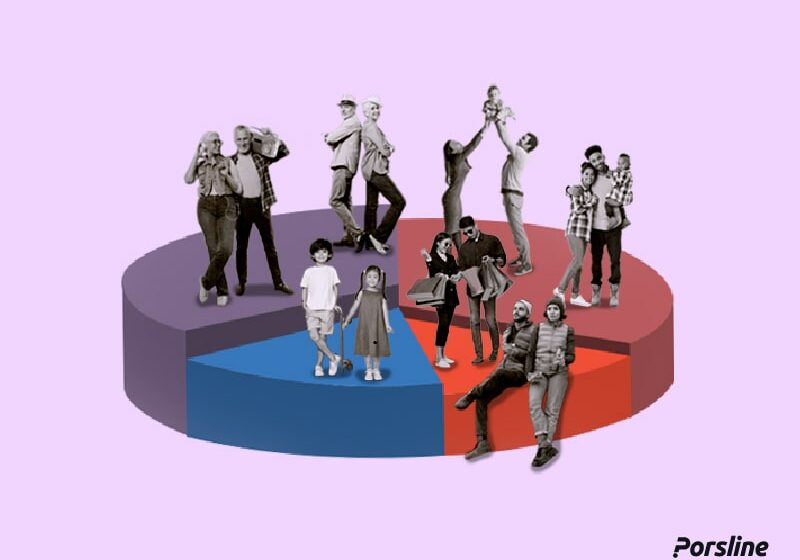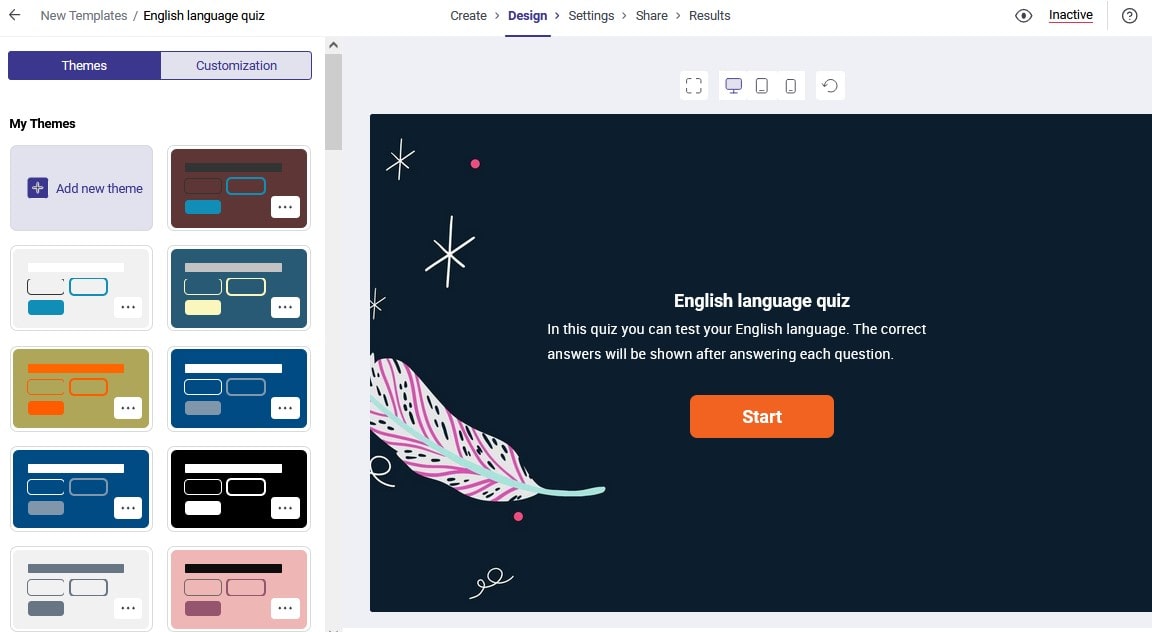Demographic Information: What to ask? Why ask? How to ask?

“Hello dear reader! Please tell me if you are male or female. Are you an employee or an employer? How much is your income?”
No one likes being asked personal questions by a stranger at the beginning of a conversation. We are not the ones saying this! It is world-famous reports and negotiation scholars who say it, and of course there has been fierce debate on this topic all over the world.
In this post, we want to answer this question: “Is the place for demographic questions at the beginning or the end of the survey?”
Demographic questions are questions that examine the characteristics of populations and societies.
In this post, in addition to explaining in detail the concept of demographic information and its applications in customer and market research, we refer to some of the most used sample questions in designing online surveys and some golden tips for designing demographic surveys for customers.
What is demographic information?
Demographic information or demographic characteristics refer to the characteristics of a population such as age, gender, race, nationality, place of residence, marital status, employment status, income, and such.
In addition, there are other topics that can be included in demographic information such as people’s political/religious beliefs, the role of individuals in the family, the purchasing behavior of the population, the presence or absence on social media, and even being a homeowner or renter.
In fact, any data that helps to better understand people and classify them can be studied as demographic information of that population. Therefore, it is very important that you define your goal in collecting demographic information and also determine which part of the population is the target market.
Collecting demographic information is one of the best ways to understand and recognize different groups, including target markets. With this information, you understand the identity, needs, desires, and concerns of different people or groups. Based on that, you can easily analyze the events or determine your next actions.
What are the uses of the demographic information survey?
Demographic information has a wide range of applications ranging from scientific and academic research to market and marketing research. These applications aim to assess the accuracy of research results, segment target groups, and plan business development.
Recognition and segmentation of target groups
By creating a demographic survey, you can segment the target market and then deliver a specific message to each group of the market.
Regardless of whether demographic information or demographic questions are related to age, education, income, and employment status, they are all looking for features that can divide a large group of market or customers into smaller groups and segments.
If the target audience for your demographic survey is companies or organizations, then the demographic information is transformed into firmographic information. In this case, your questions examine the characteristics of organizations. For example, elements such as the size of the organization, its financial flow, the human resources of the organization, and the organization’s managers and their characteristics are analyzed.
Market and marketing research
From a marketing point of view, the better and more accurate it is possible to identify the target group and the final audience, the more likely it is to attract customers by sending the right marketing messages. This is because every market research survey or customer survey form contains demographic questions.
Answering demographic questions is useful in product/service development, measuring satisfaction with service quality, determining product pricing, and understanding customer opinions and needs according to their demographic characteristics.
For example, the fact that most of the population in your target market are single men and women with high incomes can influence the development and pricing of your product, because, in this case, you know that the purchasing power of your customers is high, you also know their needs and find out better ways to meet them. Now based on this knowledge, your advertising, content production, and marketing actions will become more effective and target-focused.
Professional, scientific, and academic research
The demographic survey has many functions in university researches. By identifying the demographic information of the participants, researchers will have a clear idea of the participants and their motivations. Furthermore, the scope of the research is limited to a special population, so the results will be more reliable and their analysis will be more accurate.
Should we place the demographic questions at the beginning or at the end of the online survey?
Since demographic questions are often asked as part of online surveys, where in the survey or when and how they are asked is often ambiguous.
In general, businesses face two situations regarding the objectives of their online form and survey:
- When the survey is designed and implemented only for the purpose of collecting demographic information.
- When the demographic questions are part of the survey questions while the main purpose of the research is to answer a totally different question.
In the first case, after explaining the purpose of the survey in detail, you can ask your questions. But in the second one, you should pay attention to various points to choose the time and place of asking these questions.
Some experts believe that demographic questions should be asked at the beginning of the survey, some believe that they should be asked at the end, and others say that the most important demographic questions should be asked at the beginning of the survey while demographic questions of lower importance should be asked at the end. Therefore, in brief, “there is no definite and correct answer to this question, and where to place these questions depends on your goals.”
In fact, where to place demographic questions is related to various factors. Examples of these factors include the following: Do all questions on the survey ask personal and sensitive information? To what extent are the respondents confident of securing the confidentiality of their information? What is the relationship between demographic questions and other survey questions? How many questions do you have? What does motivate the respondent to answer your survey and demographic questions?
Based on these factors, you should decide whether to place demographic questions at the beginning or the end of the survey or even split them according to their importance so that they are appropriate for your ultimate goals. Moreover, you should know which place can provide you with a higher response rate and more accurate data.
In general, the purpose of your survey, the type of communication you have with the respondents, and the clarity and manner of asking the questions have a great effect on your choice.
From a psychological point of view, at the beginning of the survey, people tend to be suspicious when answering the questions. In addition, many people are willing to talk about their marital status or income only after establishing a relationship. Therefore, postponing the demographic questions to the end of the survey is a better approach.
In any case, our advice is that whether you ask demographic questions at the beginning or at the end, be sure to inform your audience of your reason for requesting such information and clearly explain in what context this information will be used.
What are the best demographic questions?
Depending on the goals of your survey, choose the best demographic questions to answer your business needs. Since these questions are more sensitive and private in nature, asking all questions may decrease your survey response rate. Therefore, it is better to choose some of the best and most relevant questions and use them in your survey.
Age
What is your age?
17 years or less 18 to 20 years 21 to 30 years
31 to 40 years 41 to 50 years 51 to 60 years 61 years or more
Gender
What gender do you identify as?
I am a lady I am a gentleman I prefer not to say.
Education
What is the highest degree or level of education you have completed?
Elementary Diploma Associate Bachelor Master Doctorate and above
Employment
What is your current employment status?
I am unemployed and looking for work I am studying I work full time
I work part time I am a freelancer I am retired Other
Income
What is your approximate monthly income?
$1,000 to $4,999 $5,000 to 8,499
$8,500 to $10,999 $11,000 or more
Marital status
What is your marital status?
I am single I am married I am divorced My wife/husband is dead
Online behavior
On which of the social media networks are you most active?
Instagram Twitter LinkedIn
Facebook YouTube Others
On a given day, how long do you spend on your favorite social network?
Less than an hour Between 1 and 2 hours Between 2 and 3 hours
Between 3 and 4 hours More than 4 hours
Which method do you use most to buy the product you need?
I only buy in person from the market I only buy online
Sometimes I buy online and sometimes in-store.
Some important tips for designing demographic questions in online surveys
- First, think about the goal of the survey.
It is the goal of the survey that determines the number and type of your demographic questions.
Depending on the nature of your business, you may need to ask respondents less common questions. For example, if you intend to start a company in the field of insurance and related services, you should ask the respondents about their “insurance status”. However, a person or an organization that is not active in such a field does not need to ask a question in this field.
- Use utmost respect and transparency in designing demographic questions. Write your questions in a clear and respectful way, and wherever necessary, give the necessary explanations about the reason for asking a certain question.
Also, for more sensitive questions, instead of asking for exact data or numbers, leave numerical intervals so that the respondent can complete the survey more easily and honestly. For example, stating the exact amount of monthly salary is not pleasant or acceptable for many people. But if you use a numerical range in your answers, the response rate and accuracy of the received answers will increase.
- Ask only the questions you need to be answered. In many cases, you don’t need to include all demographic questions in your questionnaire or online survey form. By asking unnecessary demographic questions, you increase the probability of not answering the survey. This is because the respondents have limited time, and a high number of questions makes them unmotivated.
Additionally, if you have some of your customer’s or employee’s demographic information, instead of asking them again for this information, use the «Add Custom Variables» option in the Porsline form builder to automatically add this information to the survey.
For this purpose, it is sufficient to enter these data using the «Add Custom Variables» option when creating your survey. For more information about this feature, watch the Porsline Video Tutorials.
- If you need sensitive information about your audience, then at the beginning of the survey, explain to the audience why you need this information and how this information will remain confidential.
- If you have the possibility to collect the surveys anonymously, do so. Most of the time, you don’t need to know the names of people in demographic surveys. In these cases, do not ask the name of the respondents to get more reliable answers. This method is very effective, especially in sociological research as it reduces the possibility of collecting false or wrong data.
- Always pay attention to the duration of answering the survey. You can always collect more and better quality answers through shorter surveys.
- Use the possibility of advanced filters and reporting in Porsline to carefully analyze the data of different segments of respondents and define data filters based on demographic information.




